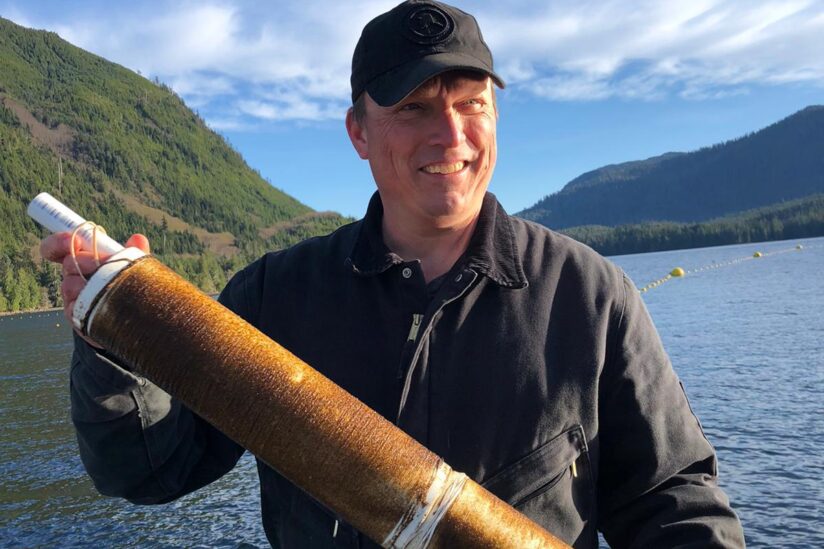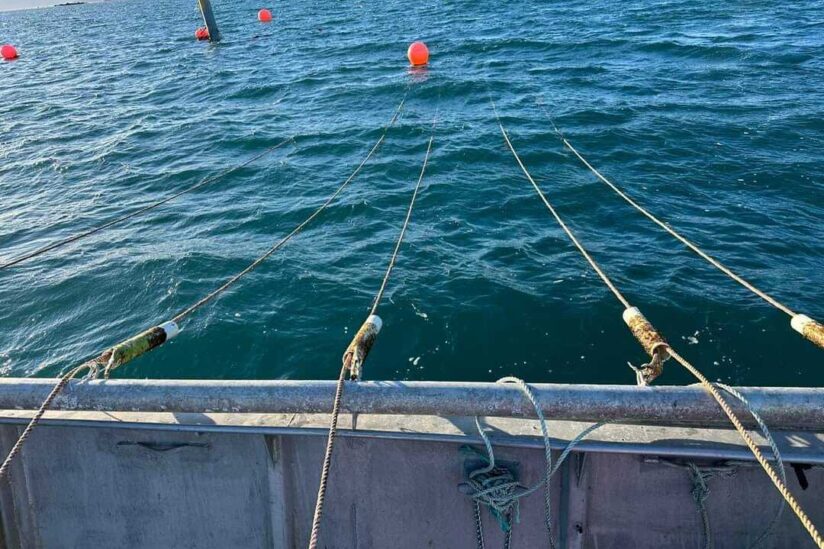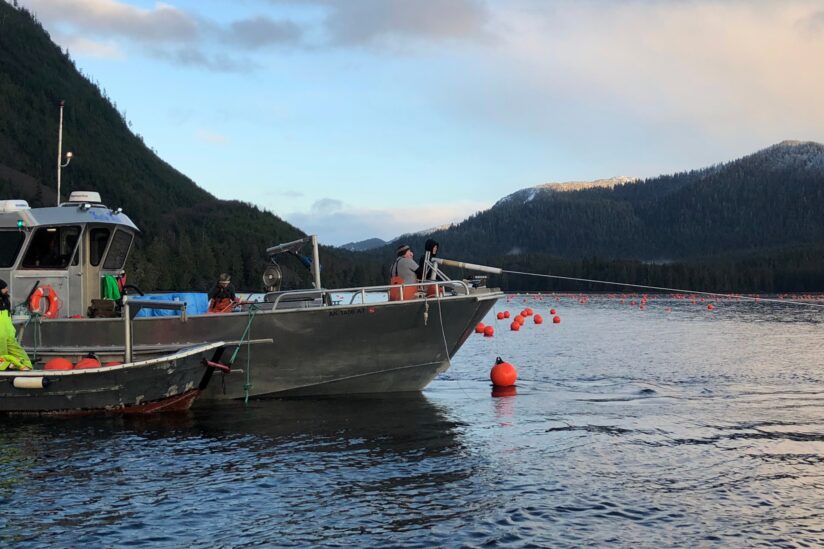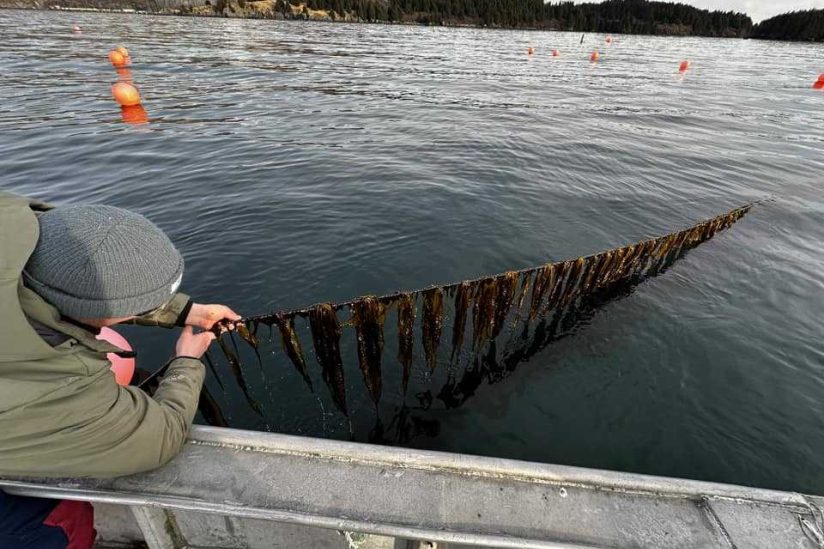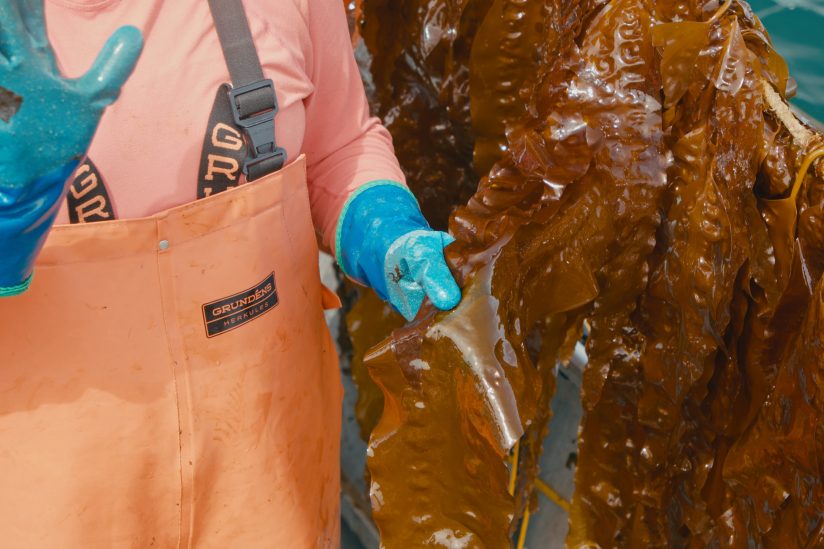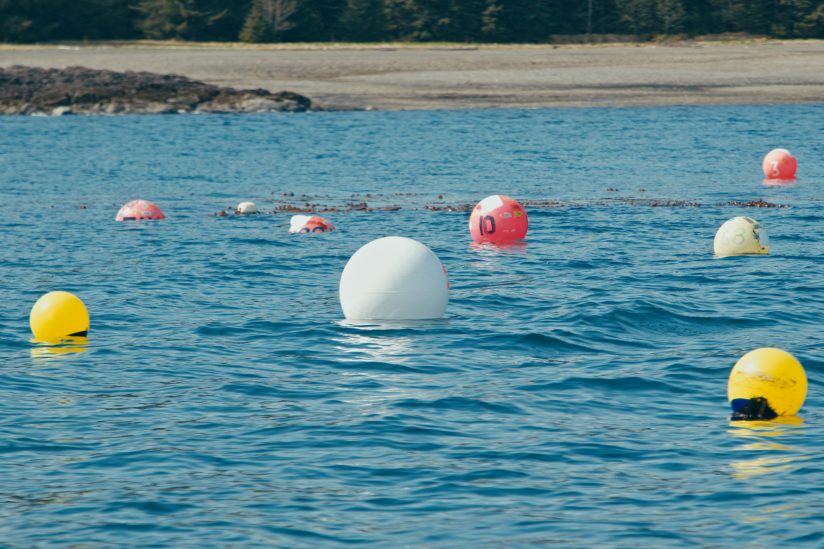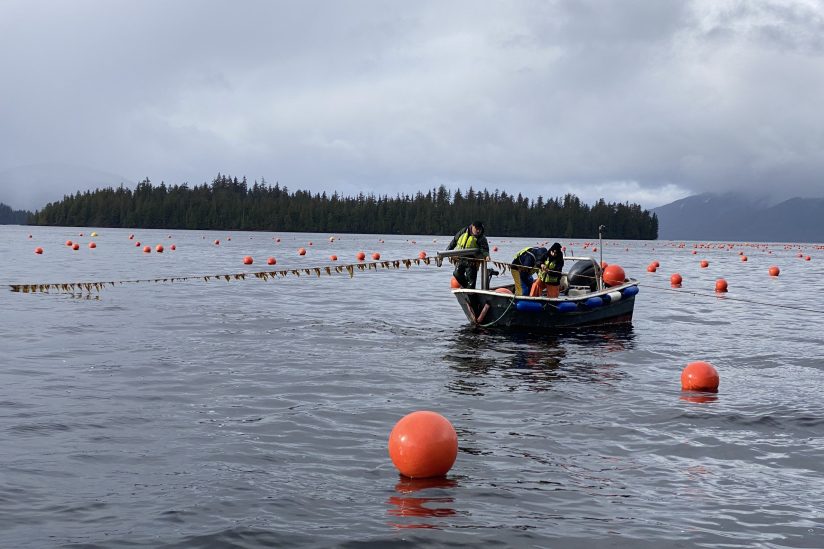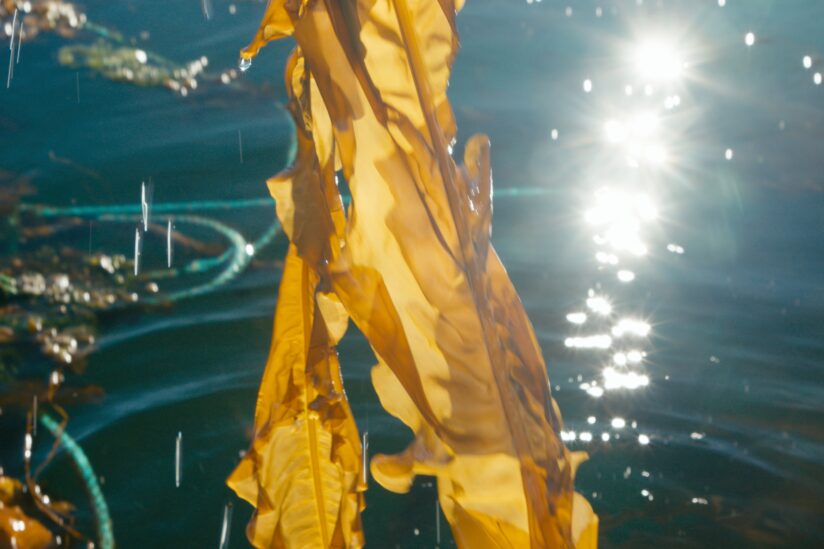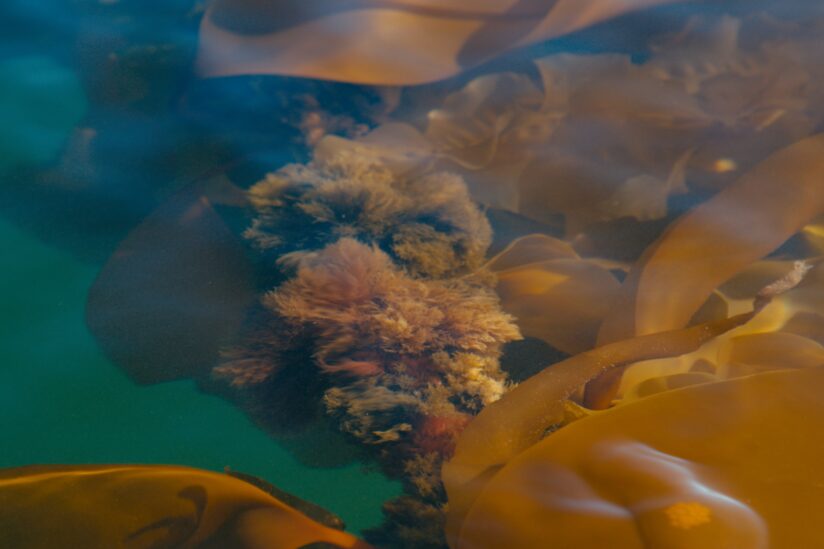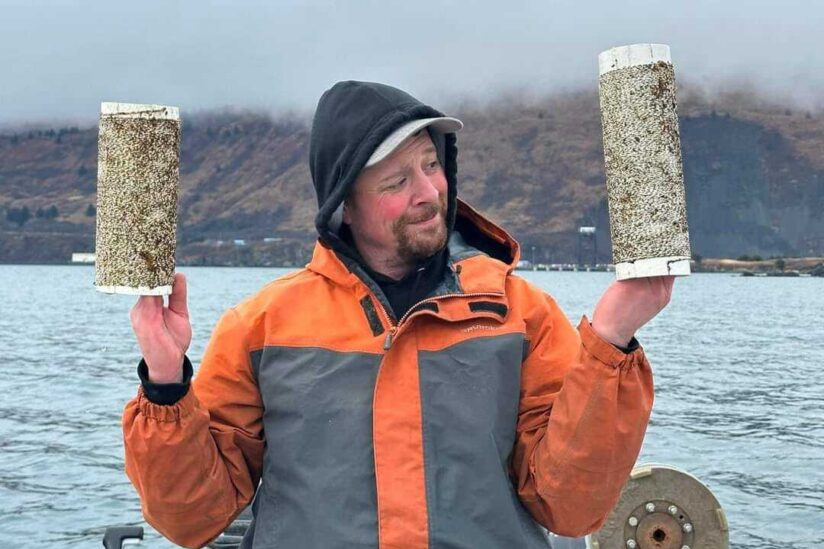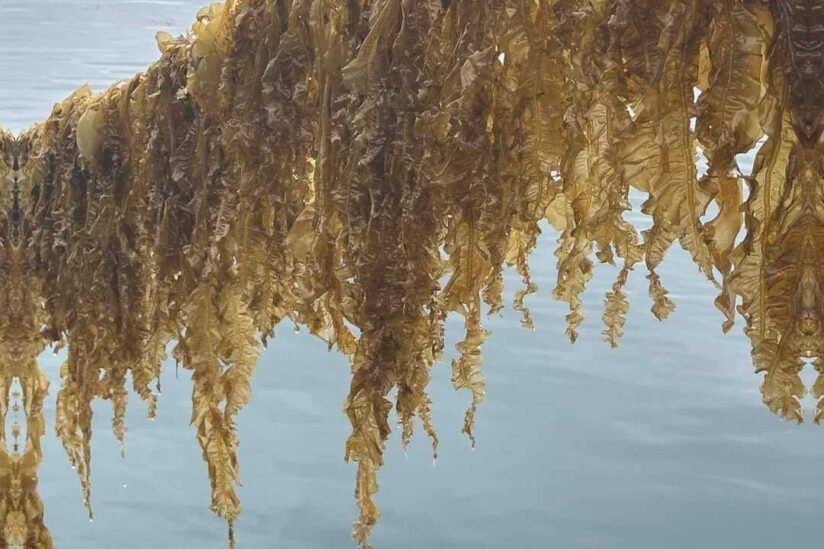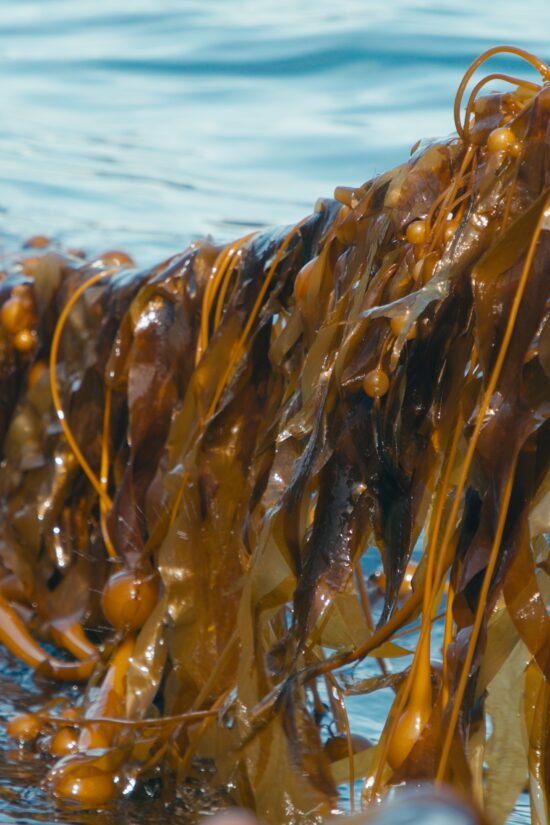
The grow-out phase for kelp in Alaska typically lasts 5-7 months and begins with taking the seeded lines from the hatchery and unspooling them on grow lines. Farmers regularly survey their sites to perform any required maintenance, monitor effective growth, and determine the right timing for a successful harvest.
- Seeding method
- Twine method
- Grow out time (until first harvest)
- November - April/May
- Tasks during grow out
- Monitoring, maintenance
- Frequency of farm visits
- Ideally every 2-3 weeks
-
Dependant upon the weather
- Risks during grow out
- Entanglement, debris, slack growlines, storm damage, anchor movement
- Monitoring equipment
- Drones, monitoring buoys, sensors
Optimal conditions for outplanting sporophytes
The first phase of farm site operation involves out-planting the sporophytes. For successful out-planting, farmers should carefully consider the following:
- Water temperature: Farmers aim for water temperatures between 51-53°F, which are ideal for kelp growth. When water temperatures fall to 40°F, the growth rate and overall yield of the kelp are significantly reduced.
- Cloud cover: Overcast skies are preferred because they protect the young sporophytes from intense sunlight.
- Calm winds: Winds need to be less than 10 knots to ensure the water remains undisturbed, making it easier to out-plant.
- Low tide: Out-planting is ideally done during an approaching low tide, which makes planting easier.
- Air temperatures: Farmers often out-plant in cold weather, but they take great care to minimize the time the seeds are exposed to freezing air. The general rule is to avoid out-planting at temperatures below freezing, and ideally aim for temperatures above 40°F.
To give the seeds the best chance of success, it's crucial to out-plant or submerge the seed string in chilled seawater within 36 hours of leaving the hatchery tanks. Farmers should strive to get the seed onto their growlines within this time frame to ensure it remains viable and healthy during the transfer process. This careful timing is essential for optimizing the growth and yield of the kelp.
It always feels like such a risk and such a gamble every time you put those tiny little plants out. Then you just set them off and cross your fingers. You come every few weeks and make sure the buoys aren't tangled, but the rest is up to the kelp.
After seeding, the farmers monitor the growth process, checking for issues such as slack in the growline, fouling, and debris after storms. To save time and costs, farmers use various tools to monitor the site. Despite this, they have limited means to support seaweed growth.
Possible problems that can occur on a farm include:
- Anchor drag
- Slack in the growlines
- Broken equipment
- Buoy tangles
- Sea ice
- Biofouling
Monitoring technology
Case study Sea Quester Farms LLCSea Quester Farms uses drones to map their farm during the growing season and harvest. By flying over a set route and taking aerial photos, they can analyze growth patterns and estimate yields. This data helps them make accurate projections, improve harvest planning, and check for entanglements or debris, slack in the grow lines storm damage and anchor movement.
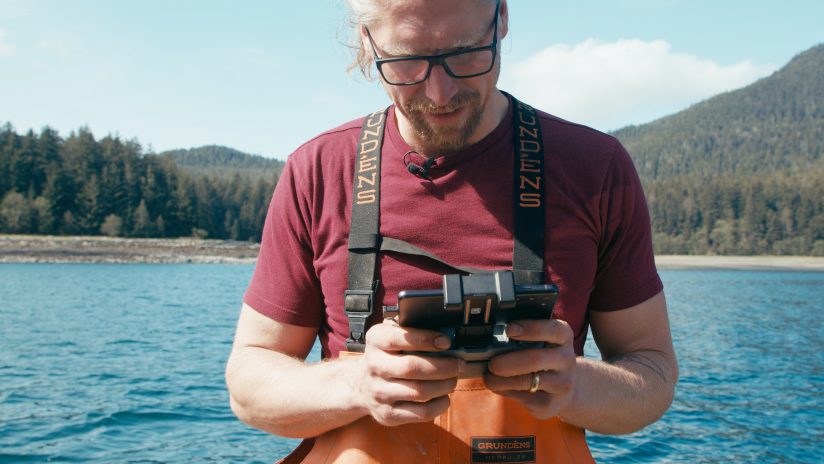
Jonny Antoni checking his farm with a drone controlled by his mobile phone
In addition, Sea Quester Farm uses a monitoring buoy with a temperature sensor positioned around two meters below the surface. This is an ideal depth for the growth of different kelp species. The buoy also gathers data on wind direction and wave motion. Since the farm is close to Juneau, it can transmit real-time data via cell phone towers. As a result, Seagrove can remotely monitor wave conditions and wind activity at the farm.

A monitoring buoy can transfer data to farmers
R&D and innovation
Farmers and researchers are working closely to better understand seaweed farming's impacts. In early 2023, NOAA's Dr Alix Laferriere initiated a research project to investigate how seaweed farms might serve as habitats for local fish species by comparing fish diversity around the farm with that in natural kelp beds.
This was done by collecting fish samples and analyzing environmental DNA from the water while using underwater cameras to monitor fish movement in both environments. The project, in partnership with Alf Pryor of Alaska Ocean Farms, highlights the significance of collaboration between the aquaculture industry and researchers.
In 2024, Nick Mangini from Kodiak Island Sustainable Seaweed successfully harvested the first commercially grown dragon kelp. The seaweed was planted on April 25, 2024, and was harvested on July 3, 2024, taking approximately 70 days to reach the size shown in the picture.
